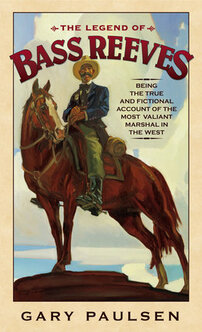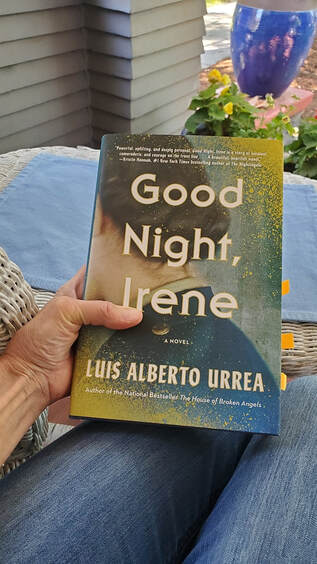|
I was thrilled to take part in a wonderful event! Pulitzer Prize finalist Luis Alberto Uurea came through Spokane, WA, on tour publicizing his newest book Good Night, Irene. Very soon after starting to read this novel, I wished that I had written it, or rather, written a nonfiction book about the Donut Dollies of World War II. These women served coffee, donuts and a slice of home to soldiers on the front lines of battle. I could not have written this book because Luis Alberto Uurea based it on the true-life experiences of his mother, Phyllis Irene McLaughlin, who traveled across Europe with Patton's army. It's a great adventure story of women's strength, friendship and sacrifice.
The fictional account follows closely the actual service route traveled by Phyllis and her There's a new book out featuring one of my favorite historical women, Gerda Taro. I've written about her before, telling you about her incredible courage and how she believed photographs could change the world. In the mid-1930s, Gerda Taro served as a midwife of sorts, helping birth the powerful force of modern photojournalism. The new book is historical fiction based on Gerda's life. One Last Shot is a novel written in verse by Author Kip Wilson. I was immediately drawn to Kip because she has also written a book based on the life of Sophie Scholl, another young woman I've written you about and admired since I was 12 years old.
So it is with great pleasure that I welcome Author Kip Wilson to tell you about her new book and her journey writing it. (All the way to the fields of the Spanish Civil War) Take it away, Kip... Two great books for you today!
Both historical novels for young people feature Ukrainian protagonists and are based on true events during and prior to WWII. Working on the book Irena's Children, I learned for the first time the extent of the Nazi war crimes against the Polish people. The total lives lost in Poland during WWII is estimated at least five million most of whom were civilians, about 17% of the population. And now I learn that a similar number of Ukrainians died in the conflict. Approximately every fifth Ukrainian was killed during the Second World War. Only 3% of all those called up to military service for the summer of 1941 survived. The good news behind these horrendous statistics is the incredible human spirit of those who survived, their courage to rebuild their communities and their country. It definitely adds context to the endurance of Ukrainians today. This morning I woke up to this report from CNN: When I was a little girl, I loved to read about pioneers on the Oregon Trail. I came to identify with qualities I perceived in people who made that difficult journey. They were bold, grasping freedom and opportunity. They were tough, pitting themselves against nature, gambling on their physical strength and mental acuity, and testing their will to survive. When I worried about what had happened to the Native peoples whom the pioneers displaced, I was given a vague answer, "It's too bad what happened, but it's progress and you can't stop progress." From my perspective now, I would not call westward expansion human progress. And my focus now is on Indigenous people's amazing will to survive. I'm identifying myself with the qualities of compassion, good listening skills and the ability to see history more clearly.
As a writer and lover of books, I'm also working to amplify voices that have long been ignored. White guys like John Wayne personify our image of the American West, so it might surprise you to know that roughly one in four cowboys riding the range was black. On Saturday night when they went to town, these men couldn't stay in hotels or eat in restaurants. I'm not sure if they could drink and play cards in the saloons, but during the workweek, their skill with a horse, a rope and a gun, could gain them a level of respect. In the three decades following the Civil War at least 25 (probably more) African American men served as deputy U.S. Marshals for the U.S. government. There's some evidence to suggest that one of those rough-riding, straight-shooting black lawmen formed the basis for the iconic Lone Ranger. Deputy Marshal Bass Reeves grew famous in the late 19th Century, during his 30-years pursuing and arresting bandits and murders throughout what was called Indian Territory. The former slave has some distinct resemblances to Lone Ranger of radio, comic book, TV and movies. Bass was born a slave in Arkansas in 1883, and was taken to Texas his owner William Reeves as an 8-year-old boy. When the Civil War broke out, Reeves' son joined the Confederate Army and took Bass with him to the front lines as a servant.  U.S. Deputy Marshal Bass Reeves U.S. Deputy Marshal Bass Reeves Before the war's end, Bass escaped, heading west to what was then called Indian Territory and now the State of Oklahoma. Historians say there he learned horsemanship and tracking skills from Native Americans and also became handy with Colt 45 and a rifle. After emancipation, Bass was just one of many black men looking for work. “Right after the Civil War, being a cowboy was one of the few jobs open to men of color who wanted to not serve as elevator operators or delivery boys or other similar occupations,” says William Loren Katz, a scholar of African-American history. The Choctaw, Creek, Seminole, Cherokee, and Chickasaw tribes had been forcibly moved from their homelands to "Indian Territory" where they governed themselves, but the federal government was responsible for rounding up the lawless element hiding out there, thousands of thieves, murderers and fugitives. The call went out to hire 200 deputies for the job, and Bass Reeves fit the profile. Strong, steady, 6-foot-2, with a deep voice and commanding presence, he was appointed the first African-American lawman west of the Mississippi.  U.S. Deputy Marshal Bass Reeves U.S. Deputy Marshal Bass Reeves By all accounts, he was one of the best, serving for more than 30-years in relentless pursuit of lawbreakers. The Oklahoma City Weekly Times-Journal reported, “Reeves was never known to show the slightest excitement, under any circumstance. He does not know what fear is.” True to the mythical code of the West, Bass Reeves never drew his gun first. Though many outlaws aimed to shoot him, their bullets always missed. He was never even grazed by a bullet. Reeves admitted he shot and killed 14 men, but all in self-defense. He's credited with bringing in 3,000 outlaws alive. More than once, showing up at the District Courthouse in Fort Smith with ten or more prisoners in tow. From the “Court Notes” of the July 31, 1885, Fort Smith Weekly Elevator: “Deputy Bass Reeves came in same evening with eleven prisoners, as follows: Thomas Post, one Walaska, and Wm. Gibson, assault with intent to kill; Arthur Copiah, Abe Lincoln, Miss Adeline Grayson and Sally Copiah, alias Long Sally, introducing whiskey in Indian country; J.F. Adams, Jake Island, Andy Alton and one Smith, larceny.” Though he couldn't read or write, Bass Reeves always knew which arrest warrant matched his man, and he used his brains, as well as his brawn and firepower to enforce the law. He often wore disguises to catch criminals unaware, and that may be the first clue that connected Bass with the famous "masked man." He rode a large light gray horse and gave out silver dollars as a calling card, similar to the Lone Ranger's trademark silver bullets. At least one biographer says the deputy marshal at times worked with a Native American partner tracking criminals. And like the Lone Ranger, he demonstrated an unshakable moral compass, even arresting his own son on a murder charge, after which the son was convicted and sentenced to life in prison.  So far, historians have not proven the Lone Ranger was based on the exploits of Bass Reeves, but the most convincing piece of evidence seems to be that many of the prisoners he captured and turned into authorities at Fort Smith, went to serve their jail sentences in Detroit, the city where George Trendle and Fran Striker created the character of the Lone Ranger. A children's biography Bad News for Outlaws: The Remarkable Life of Bass Reeves, Deputy U.S. Marshal, won the 2010 Coretta Scott King Award. It was written by Vaunda Micheaux Nelson and illustrated by R. Gregory Christie. One reviewer on Goodreads says, "This is a children's book, but still very informative." Because, of course, most children's books are not informative. (heavy sigh)  For more reading on the topic, check out Gary Paulson's historical novel for teens called the Legend of Bass Reeves: Being the True and Fictional Account of the Most Valiant Marshal in the West. Publishers Weekly called it a "compelling fictionalized biography...Effectively conveying Reeve's thoughts and emotions, the author shapes an articulate, well-deserved tribute to this unsung hero. Sources: https://blackdoctor.org/482030/this-week-in-black-history-the-real-lone-ranger-was-a-black/ https://www.history.com/news/bass-reeves-real-lone-ranger-a-black-man |
I'm fascinated to discover little-known history, stories of people and events that provide a new perspective on why and how things happened, new voices that haven't been heard, insight into how the past brought us here today, and how it might guide us to a better future.
I also post here about my books and feature other authors and their books on compelling and important historical topics. Occasionally, I share what makes me happy, pictures of my garden, recipes I've made, events I've attended, people I've met. I'm always happy to hear from readers in the blog comments, by email or social media. Archives
September 2023
Categories
All
|




